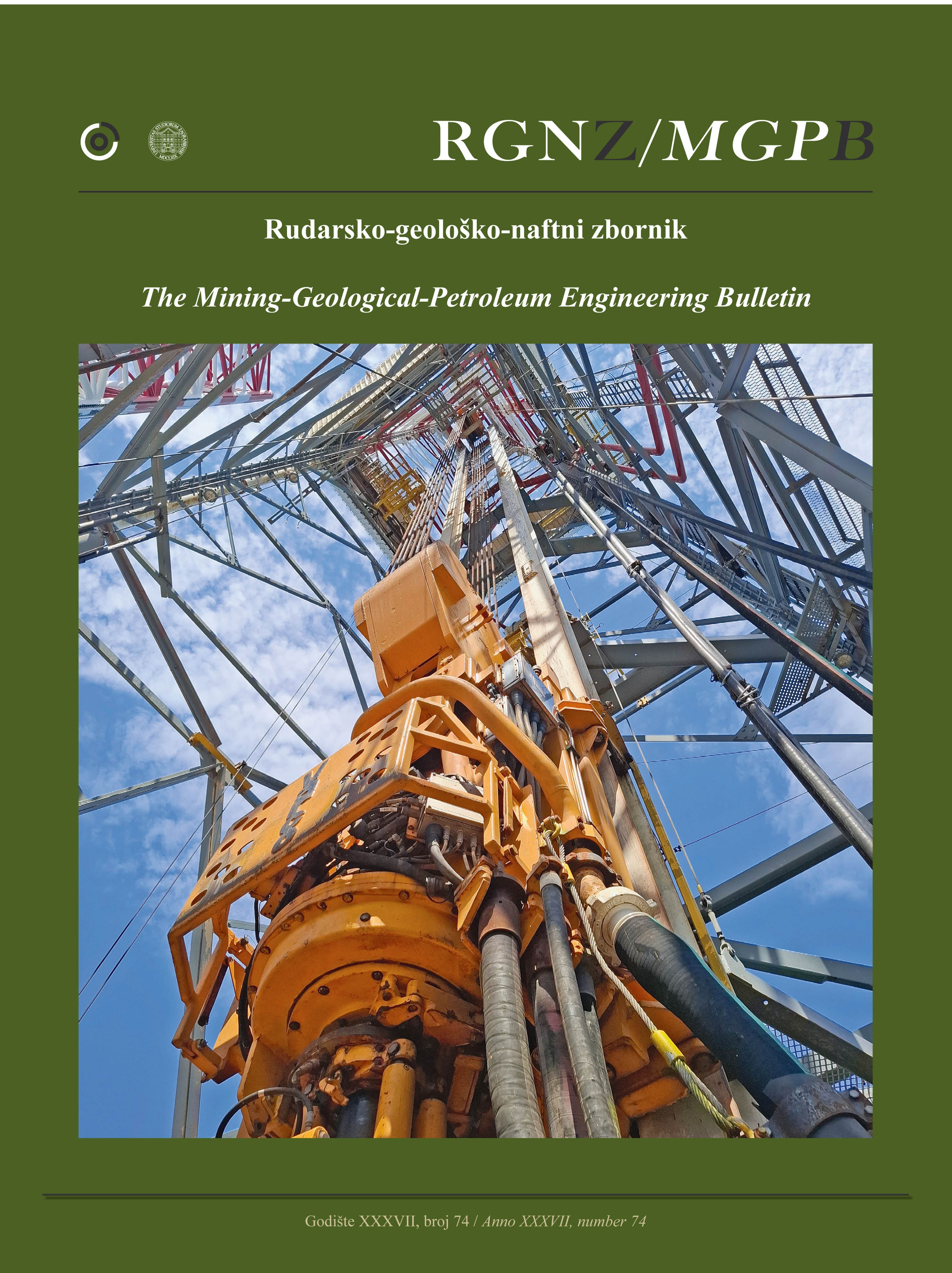The effects of test specimen shape tolerances on determining the mechanical and energy dissipation properties of limestone rock
DOI:
https://doi.org/10.17794/rgn.2025.3.12Keywords:
cylindrical rock test specimens, shape tolerances, mechanical properties, energy dissipation propertiesAbstract
The uniaxial compressive strength (UCS), Young's modulus (E) and Poisson's ratio (ν) of intact rock depend on the cylindrical specimen shape tolerances (flatness of ends R, their parallelism P and perpendicularity to the specimen axis O). Today's specimen acceptance criteria (allowable R/P/O) are based on scarce research data from the 1970s that mostly relate to UCS without considering the rock strength category (worst case scenario). They are also very strict and, in some cases, difficult to implement, requiring engineering judgment. To increase reliability and facilitate judgment of specimen acceptability, this study investigates the influence of shape tolerances on all UCS/E/ν properties and related energy dissipation properties (total, elastic and dissipated energy) for limestone and comparable medium-strength rock with UCS around 100-150 MPa. Ninety specimens were prepared with target (wider) shape tolerances (R up to 0.5 mm; P, O up to 2°) using specially developed equipment for accurate R/P/O determination. These specimens were further tested in uniaxial compression with several relevant measurement settings and all mechanical and energy dissipation properties were determined. From many experimental results and additional statistical/numerical/energy analyses, reliable behaviour models for UCS/E/ν dependence on R/P/O have been established that can be further used to assess the consequences of shape tolerances and specimen acceptability. If limits of natural variability for 'ideal' specimens are applied to these models, critical tolerances that reduce the existing requirements are obtained (e.g. R = 0.08 mm instead of 0.05 mm), which are proposed as supplementary to optimize the testing process for medium-strength rocks.
Downloads
Published
Issue
Section
License
Copyright (c) 2025 Nataša Štambuk Cvitanović, Boris Kavur, Ivan Vrkljan, Predrag Miščević

This work is licensed under a Creative Commons Attribution 4.0 International License.
Creative Commons-BY
Authors who publish with this journal agree to the following terms:
In agreeing this form, you certify that:
- You read the ethical codex of the RGN zbornik available at journal web.
- You submitted work is your original work, and has not previously been published and does not include any form of plagiarism.
- You own copyright in the submitted work, and are therefore permitted to assign the licence to publish to RGN zbornik.
- Your submitted work contains no violation of any existing copyright or other third party right or any material of an obscene, libellous or otherwise unlawful nature.
- You have obtained permission for and acknowledged the source of any illustrations, diagrams or other material included in the work of which you are not the copyright owner.
- You have taken due care to ensure the accuracy of the work, and that, to the best of your knowledge, there are no false statements made within it.
- All co-authors of this submitted work are aware of, and in agreement with, the terms of this licence and that the submitted manuscript has been approved by these authors.
Publication licence
You retain copyright in your submitted work, according to journal license policy (CC-BY). By signing this form you agree that RGN zbornik may publish it under the publication licence. In summary the licence allows the following:
Anyone is free:
- To copy, distribute, display, and perform the work.
- To make derivative works.
Under the following conditions:
- The original author must always be given credit.
- The work may not be used for commercial purposes.
- If the work is altered, transformed, or built upon, the resulting work may only be distributed under a licence identical to this one.
Exceptions to the licence
In addition to publishing the work printed under the above licence, RGN zbornik will also enable the work to be visible online.
The journal editorial can change the licence rules anytime but it cannot retroactively restrict author(s) rights.


